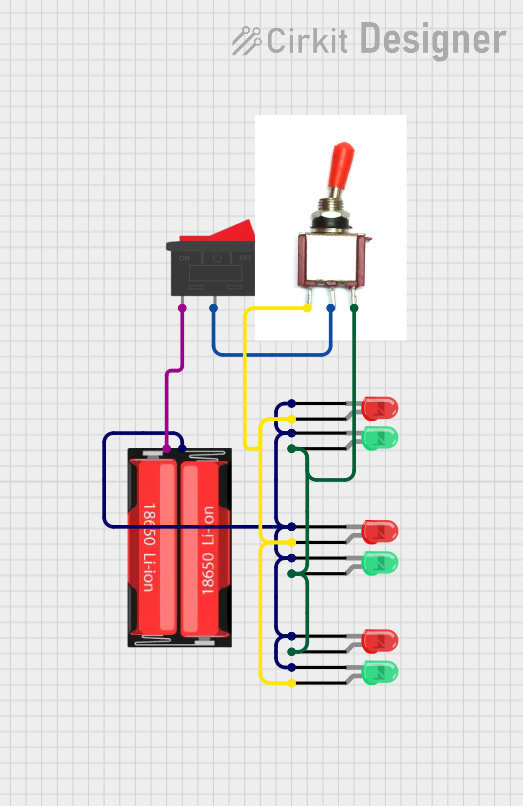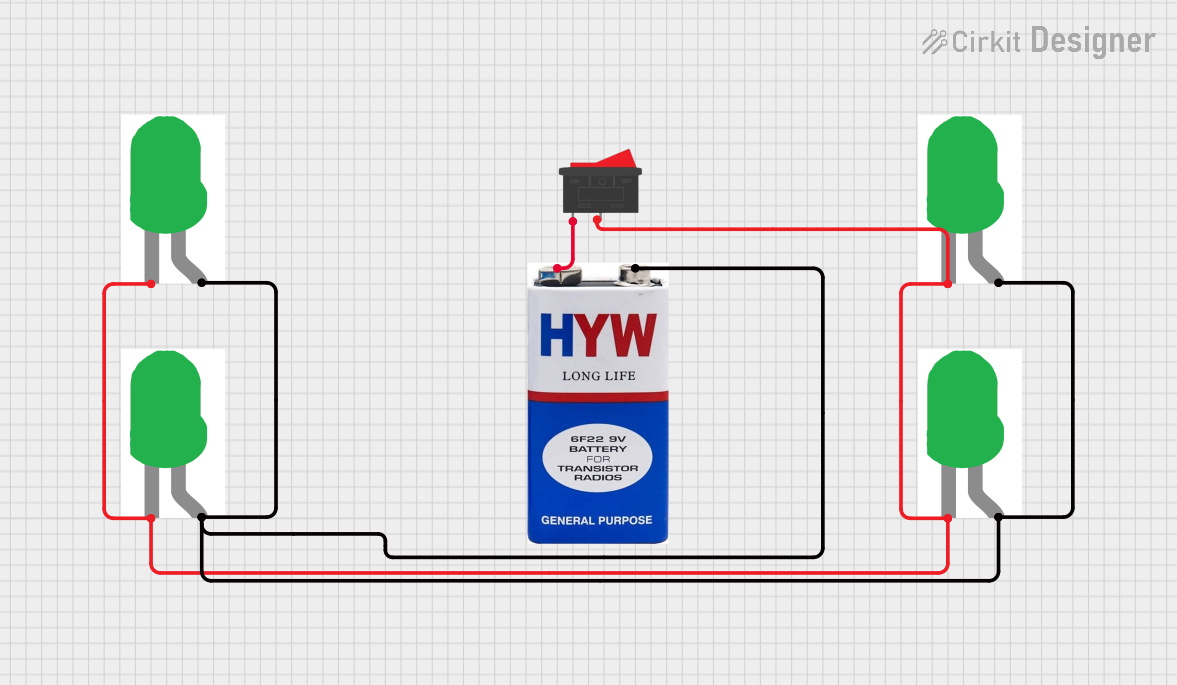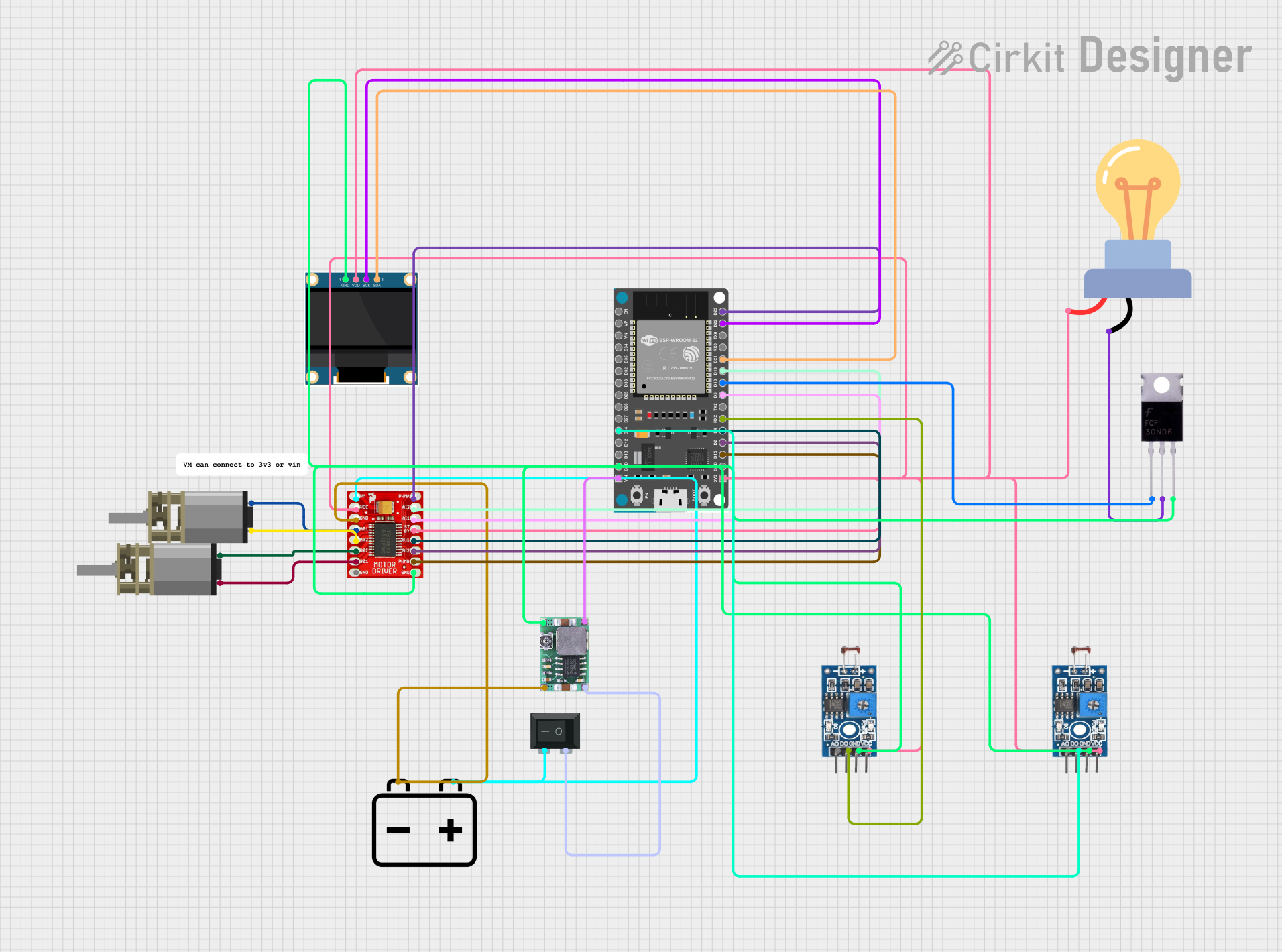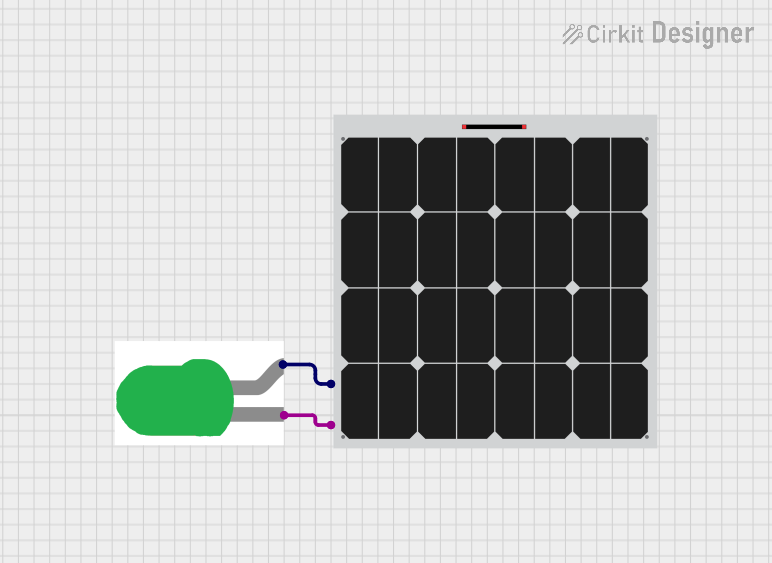
How to Use LED: Examples, Pinouts, and Specs

 Design with LED in Cirkit Designer
Design with LED in Cirkit DesignerIntroduction
A Light Emitting Diode (LED) is a semiconductor device that emits light when an electric current passes through it. LEDs are energy-efficient, compact, and have a long lifespan, making them a popular choice for a wide range of applications. They are available in various colors, sizes, and brightness levels, and are commonly used in indicators, displays, lighting systems, and decorative lighting.
Explore Projects Built with LED

 Open Project in Cirkit Designer
Open Project in Cirkit Designer
 Open Project in Cirkit Designer
Open Project in Cirkit Designer
 Open Project in Cirkit Designer
Open Project in Cirkit Designer
 Open Project in Cirkit Designer
Open Project in Cirkit DesignerExplore Projects Built with LED

 Open Project in Cirkit Designer
Open Project in Cirkit Designer
 Open Project in Cirkit Designer
Open Project in Cirkit Designer
 Open Project in Cirkit Designer
Open Project in Cirkit Designer
 Open Project in Cirkit Designer
Open Project in Cirkit DesignerCommon Applications
- Indicator lights on electronic devices
- Backlighting for displays
- General-purpose lighting (e.g., bulbs, strips)
- Automotive lighting
- Decorative and architectural lighting
- Infrared LEDs for remote controls and sensors
Technical Specifications
Below are the general technical specifications for a standard 5mm LED. Note that specifications may vary depending on the type and manufacturer.
| Parameter | Value |
|---|---|
| Forward Voltage (Vf) | 1.8V - 3.3V (varies by color) |
| Forward Current (If) | 10mA - 20mA |
| Reverse Voltage (Vr) | 5V (maximum) |
| Power Dissipation | 60mW (typical) |
| Wavelength (Color) | 400nm - 700nm (visible light) |
| Viewing Angle | 20° - 60° |
| Lifespan | 50,000+ hours |
Pin Configuration
An LED typically has two pins:
| Pin | Description |
|---|---|
| Anode (+) | The longer leg of the LED. Connect this to the positive terminal of the power supply. |
| Cathode (-) | The shorter leg of the LED. Connect this to the negative terminal or ground. |
Note: The cathode is often marked with a flat edge on the LED casing.
Usage Instructions
How to Use an LED in a Circuit
Determine the Forward Voltage and Current: Check the LED's datasheet for its forward voltage (Vf) and forward current (If). For example, a red LED typically has a forward voltage of 2V and a forward current of 20mA.
Calculate the Resistor Value: To prevent damage, use a current-limiting resistor in series with the LED. Use Ohm's Law to calculate the resistor value: [ R = \frac{V_{supply} - V_f}{I_f} ] Where:
- ( V_{supply} ) is the supply voltage
- ( V_f ) is the forward voltage of the LED
- ( I_f ) is the forward current of the LED (in amperes)
For example, if ( V_{supply} = 5V ), ( V_f = 2V ), and ( I_f = 20mA ): [ R = \frac{5V - 2V}{0.02A} = 150\Omega ]
Connect the LED:
- Connect the anode (+) of the LED to the positive terminal of the power supply through the resistor.
- Connect the cathode (-) of the LED to the ground.
Test the Circuit: Power the circuit and observe the LED emitting light.
Example: Connecting an LED to an Arduino UNO
Below is an example of how to connect and control an LED using an Arduino UNO.
Circuit Diagram
- Connect the anode (+) of the LED to Arduino pin 13 through a 220Ω resistor.
- Connect the cathode (-) of the LED to the GND pin on the Arduino.
Arduino Code
// This code blinks an LED connected to pin 13 of the Arduino UNO.
// Ensure a current-limiting resistor is used to protect the LED.
void setup() {
pinMode(13, OUTPUT); // Set pin 13 as an output pin
}
void loop() {
digitalWrite(13, HIGH); // Turn the LED on
delay(1000); // Wait for 1 second
digitalWrite(13, LOW); // Turn the LED off
delay(1000); // Wait for 1 second
}
Important Considerations
- Polarity: LEDs are polarized components. Ensure the anode and cathode are connected correctly.
- Current Limiting: Always use a resistor to limit the current through the LED. Exceeding the rated current can damage the LED.
- Heat Dissipation: High-power LEDs may require heat sinks to dissipate heat effectively.
- Voltage Rating: Do not exceed the reverse voltage rating of the LED to avoid damage.
Troubleshooting and FAQs
Common Issues
LED Does Not Light Up:
Cause: Incorrect polarity.
Solution: Ensure the anode is connected to the positive terminal and the cathode to the ground.
Cause: No current-limiting resistor or incorrect resistor value.
Solution: Verify the resistor value using Ohm's Law and ensure it is connected in series with the LED.
Cause: Insufficient supply voltage.
Solution: Check that the supply voltage is greater than the forward voltage of the LED.
LED is Dim:
- Cause: Resistor value too high.
- Solution: Recalculate the resistor value to allow more current (within the LED's rated current).
LED Burns Out:
- Cause: Excessive current.
- Solution: Use a proper current-limiting resistor to protect the LED.
Flickering LED:
- Cause: Unstable power supply or loose connections.
- Solution: Ensure a stable power source and check all connections.
FAQs
Q: Can I connect an LED directly to a battery?
A: No, connecting an LED directly to a battery without a resistor can cause excessive current to flow through the LED, potentially damaging it.
Q: How do I choose the right resistor for my LED?
A: Use the formula ( R = \frac{V_{supply} - V_f}{I_f} ) to calculate the resistor value. Ensure the resistor can handle the power dissipation.
Q: Can I use an LED with an AC power source?
A: LEDs are designed for DC operation. To use an LED with AC, you need a rectifier circuit and a current-limiting resistor.
Q: Why does my LED glow faintly even when off?
A: This may be due to leakage current or stray capacitance in the circuit. Adding a pull-down resistor can help resolve this issue.